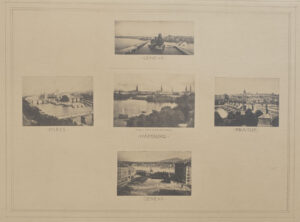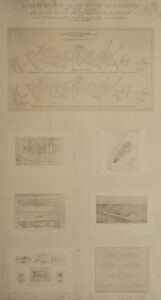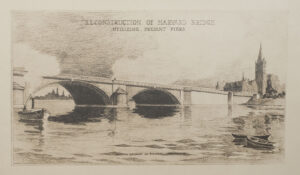Robert P. Bellows and Ralph W. Gray, the architects behind this grand proposal, submitted their plans to the Metropolitan Improvements Commission of Massachusetts in 1911. While their modifications no doubt addressed the structural concerns with the existing bridge, the proposal really sings in its aesthetic aspirations (not least of which lies in a war memorial included in the design).
To replace the existing structure of iron and steel, Bellows and Gray envisioned “a permanent and handsome structure of stone and concrete” – something reminiscent,  perhaps, of the Old World. In these plans, they point to bridges in Paris, Geneva, and Prague as their models. To be sure, a number of their renderings feature an island flowing from the bridge’s midsection. In a sketch “bearing on the future development of the basin,” the island’s model is unmistakable: its resemblance to the Île de la Cité in Paris is uncanny.
perhaps, of the Old World. In these plans, they point to bridges in Paris, Geneva, and Prague as their models. To be sure, a number of their renderings feature an island flowing from the bridge’s midsection. In a sketch “bearing on the future development of the basin,” the island’s model is unmistakable: its resemblance to the Île de la Cité in Paris is uncanny.
Visitors often find it strange that the Harvard Bridge is so named, given its immediate proximity to MIT. Legend has it that the state originally offered to name it after the most worthy school in Cambridge. Harvard naturally thought itself the better school. MIT, after determining the bridge to be structurally compromised, likewise thought it fitting to name it after Harvard.
This is a moot point, of course, since the bridge was actually named well before MIT moved to its Cambridge location in 1916. But we’re all entitled to our legends, and it’s a darn good story.

